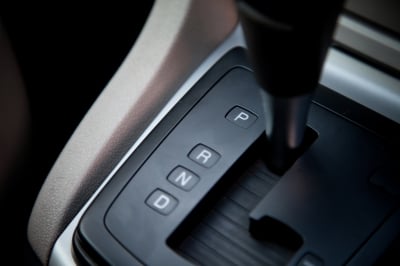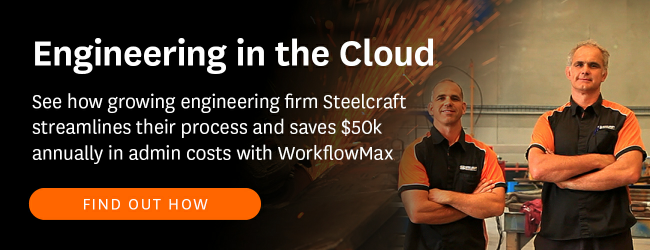Living in a world surrounded by technology, we are inclined to take for granted just how easy it is to complete many mundane, everyday tasks.
But take a look around you. An engineer has played an important role in shaping the environment you live in - from the building you’re sitting in and the road you took to get there to the device you’re reading this article on and the plastic water bottle you’re sipping from as you do so.
So, here are 7 engineers whose inventions have influenced our everyday way of life and made our modern-day lifestyle possible. If it wasn’t for these guys, we wouldn’t be able to...
Manage your engineering projects more effectively with our specialist software and tools.
1. ...heat up our leftovers and pop popcorn

The microwave oven was invented by American self-taught engineer, Percy Spencer in 1945 - completely by accident. He was employed by Raytheon at the time and noticed that microwaves from an active radar set he was working on had melted a candy bar that was in his pocket.
To verify his discovery, he fed the microwave power from a magnetron into a metal box. When food was placed in this box, its temperature rose. The first food that Spencer (intentionally) cooked with his creation was popcorn kernels, and the second was an egg which supposedly exploded in the face in one of the experimenters (ooh, yeah I’ve had to clean up an unfortunate egg-plosion or two in my time).
2. ...get money from a hole in the wall

There is still debate around who was first to invent the ATM (automatic teller machine), but the invention of PIN (personal identification number) technology can be credited for certain to a 29-year-old Scottish development engineer, James Goodfellow.
A PIN is a numeric password that is used to validate electronic transactions at an ATM machine so we can access our account information. Goodfellow’s idea now authenticates billions of dollars worth of transactions every day, but can you believe he was paid just £10 for his world-changing theory?
He was made redundant a year after coming up with the PIN idea, and signed the patent licence over for the small fee. However, a small consolation, he was recognised in 2013 for his efforts by being enrolled in the Payments Hall of Fame.
3. ...get to the top of skyscrapers without taking the stairs

While Elisha Otis didn’t actually invent the elevator, his contribution was perhaps more important. Otis was the mechanical engineer who invented a safety device that would make it practical for elevators to be used in highrise buildings.
Otis invented a revolutionary safety brake that prevented an elevator from crashing to the bottom of a building if the elevator rope broke. He sold his first safe elevator in 1853, and architects visions have been climbing ever skyward since.
4. ...keep our beers cold and our groceries fresh

The history of the refrigerator is a long one - going right back to the invention of ice boxes. However, in 1914 Nathaniel Brackett Wales, an American engineer, was credited with coming up with an idea for the domestic refrigerator as we know it. The idea of refrigeration wasn’t new, but he introduced the practical concept of an electric refrigeration unit, which would become the basis for the good ol’ Kelvinator. As well as refrigerators, Wales received early patents on washers, and vacuum cleaners, and went on to work with his son to develop detonator bombs and artillery shells.
5. ...deal with traffic jams a little easier

I admit, I love my automatic car. So I would like to make a shout-out to Mr Alfred Horner Munro who invented the first automatic gearbox (transmission) in 1921.
Munro was a steam engineer, so he designed his device to operate using compressed air, rather than hydraulic fluid. This meant it lacked real power and consequently didn’t make it far in commercial application. Two Brazilian engineers, Jose Braz Araripe and Fernando Lehly Lemos would later develop the first automatic transmission using hydraulic fluid in 1932, the plans for which were sold to General Motors who first introduced it in their 1940 Oldsmobile.
6. ...stay cool

In 1902, engineer Willis Haviland Carrier designed the first air-conditioning system, forever improving the way we live and work in the modern world by controlling the temperature of our indoor environments.
The Romans were on to it when they used aqueducts to circulate water through the walls of houses to cool them, but Carrier took it a little further thanks to the advances in chemistry during the 19th century. He used his knowledge of heating objects, and reversed the process by sending air through cold coils that were filled with water. The air was cooled, and the amount of moisture and therefore humidity could be controlled. His idea was actually initially developed to help maintain consistent paper and ink alignment in a printing plant.
7. ...make it home safely on the road

Meet John Peake Knight: traffic light inventor. Knight was a railway engineer and took inspiration from the railway signalling system to invent the original traffic light in 1868. Traffic lights, version 1, were in fact a revolving gas-powered lantern with a red and a green light at the end of a wooden arm.
While they were successful at controlling traffic, a gas leak in 1869 caused a light to explode, injuring the policeman who was manning it. It wasn’t until 1912 that an electric alternative was developed by Lester Wire, an American policeman.
Technology has come a long way since these guys were in business, but their original sparks of ingenuity formed the foundations for some of our most useful daily appliances and systems. Can you imagine how different life would be without them?!






